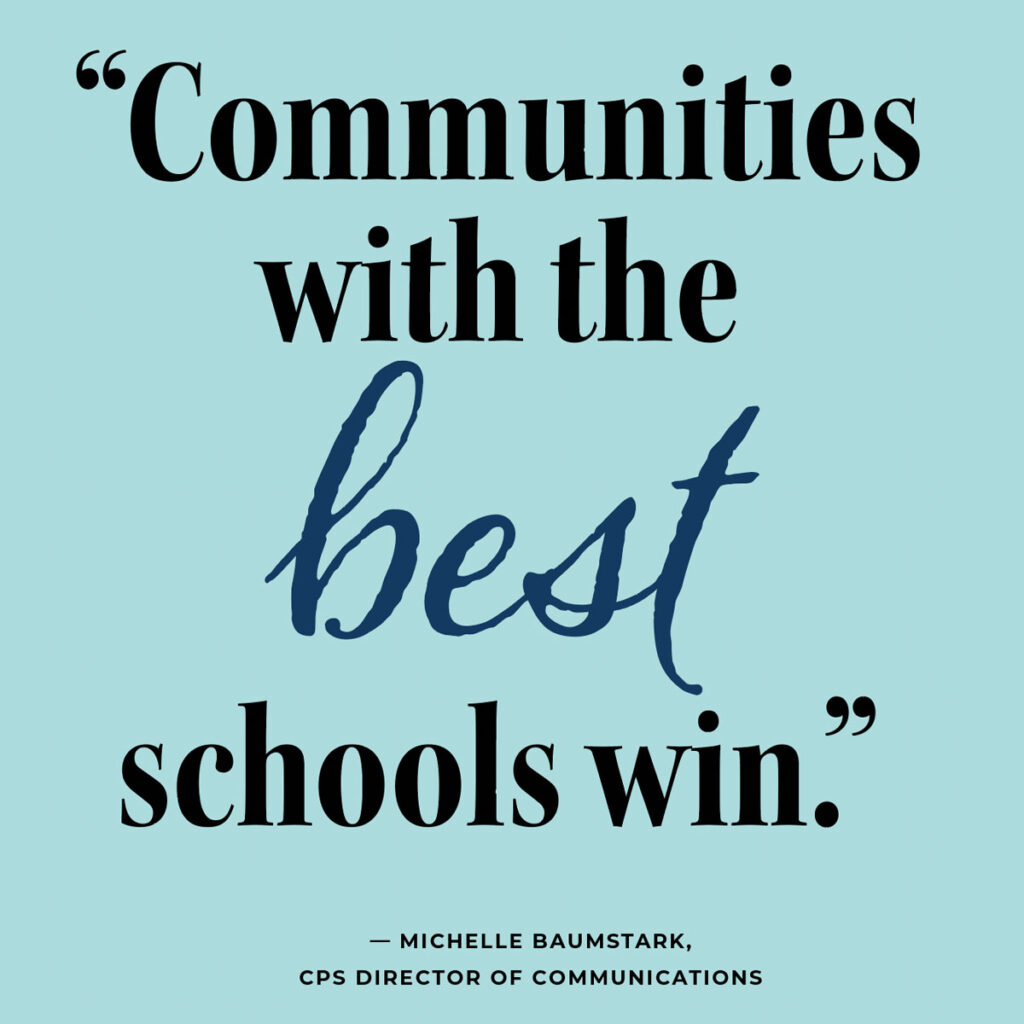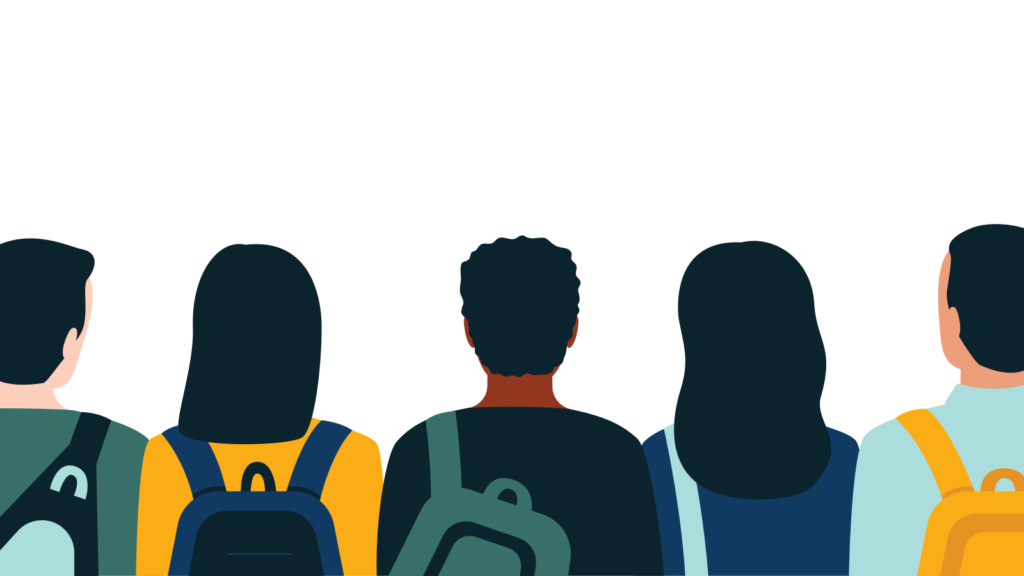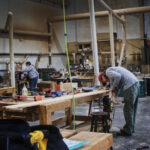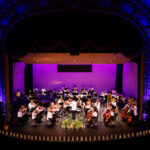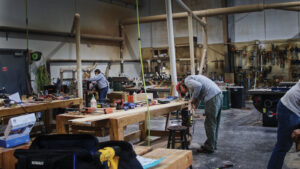School leaders tout shared goals for educating students.
A $17.2 million campus expansion at Columbia Independent School and doubling the size of the cafeteria at Christian Fellowship School are just two signs of the health of Columbia’s private and parochial schools, which have a combined total enrollment of just over 2,100 students to start the 2023-23 school year.
Meanwhile, the unofficial first day enrollment total for Columbia Public Schools was 19,157, as the state’s fifth largest school district added more than 350 students from the previous year’s totals.
One story that the numbers don’t portray, however, is that while COMO public and private schools compete for the same students and families, they are not adversarial.
“We’re all in it for the kids,” says Stephen McBee, director of engagement at Christian Fellowship School, 4600 Christian Fellowship Road, the city’s longest running private school which began educating students in 1980. Noting that CFS has a faith-based emphasis, he adds, “We’re all educating the children and growing them up to be successful adults in the world.”
CPS Director of Communications Michelle Baumstark echoes that point.
“We all have the goal of providing education to our scholars and we all have the same goal in mind — to provide an excellent education so that our students go on to be productive citizens in our community,” she says. “We have great relationships with our private and parochial school counterparts.”
Filling some gaps
In fact, Baumstark points out, CPS partners in many ways to benefit students. For example, private and parochial school children in the CPS boundaries may qualify for and participate in the district’s gifted education program. High schoolers from private and parochial schools – as well as homeschooled students – may take classes at Columbia Area Career Center. Others take elective courses or online courses not offered by their schools, and some play on sports teams when the sport is not offered at their school.
“Public schools are available for all children,” Baumstark adds. “When there are gaps in services or programming at private or parochial schools, the public schools are available to fill those needs.”
The enrollment at CFS, which offers pre-kindergarten through 12th grade, was 476 to start the 2023-24 school year. That number is up from 440 a year ago, and it’s a 70 percent increase from 286 four years ago.
“We consider ourselves one of the best-kept secrets in Columbia,” McBee explains. “We do a good job reaching out and communicating with families.” The CFS website notes that students represent more than 25 churches in Columbia and that 90 percent of graduates will attend a post-secondary institution. About 10 percent of graduates earn enough credits to be considered a “super sophomore” — almost a junior — when they begin college. That possibility is boosted by the availability of dual credits and other advanced placement programs, McBee says.
He also mentions that CFS opened earlier than most schools that continued to offer online learning during the COVID pandemic.
The cost of educating students
The tuition to attend CFS is between $9,000 and $10,000 annually, depending on the grade level. McBee says the MoScholars program, which allows tax credits to offset a portion of the cost of tuition, is a popular payment option for some CFS families.
The highest-costing private school in COMO is CIS, located at 1801 N. Stadium Blvd. Full tuition for students in grades six through 12 is $16,450. Tuition for lower school students is $14,950.
“We’re in here pretty tight right now,” says Kerry Stockwell, director of admissions. “We’re about out of space. We’ll be glad to have that new space.” CIS is adding junior kindergarten and next year will have a program for 3-year-olds.
“We have a program that’s pretty engaging, so it’s not just like a daycare option,” she explains. “We’re giving them exposure to our music, our environment, our overall academic program.”
CIS has grown steadily by 15 to 20 students each year since opening in 1998. This fall’s enrollment of 413 is up from 396 last year. The current construction project will add just over 29,000-square-feet of new space that will primarily expand the school’s upper grades — nine through 12 — with a new building, as well as renovations to the existing building.
As far as the higher cost of tuition is concerned, Stockwell notes that other private and parochial schools, such as Tolton Catholic High School and Our Lady of Lourdes Interparish Council elementary school, receive some of their funding from their religious affiliations.
“At CIS, we’re completely tuition-driven,” she says. “There’s a small percentage of public fundraising that we do. But there is no tax base or another church or organization providing that support.”
About 40 percent of CIS students pay a reduced rate via a flexible tuition program and financial aid. For those students, Stockwell says, “it’s probably lower than what CPS spends per student.”
‘Students don’t get lost here’
CIS has students who attend the CPS Career Center and others take advantage of advanced course offerings at CPS. Stockwell is careful not to sound “anti-public schools” when making comparisons between CPS and CIS and discussing the factors that may be driving the enrollment bump among private and parochial schools.
“We exist because there are a couple of things families are looking for,” Stockwell says. “A small school environment and also a smaller school community, so students get more attention from teachers. Students don’t get lost here.”
She also touts the academic offerings at CIS as “more challenging.”
“Students who are ahead of their peers can come here rather than being bored at school,” she adds. “We’re able to customize a little more — give students extra challenge or extra support.”
Those factors — smaller class sizes, more individual attention from teachers and staff — are among the benefits that other COMO private school administrators also list. Stockwell reports that a recent survey of CIS newsletter subscribers also listed “our independence from religious organizations or government entities” among the top benefits of enrollment.
Elsewhere on COMO’s non-public school landscape, Tolton High School and Our Lady of Lourdes total roughly 900 students. Heritage Academy, a small Christian school with about 120 students in grades K-12; Christian Chapel Academy, located in the Christian Chapel Church, with a 2023 fall enrollment of 151 students; and College Park Christian Academy, with 58 students in grades K-8, are among the other parochial and private schools in COMO. Their tuitions range from just under $4,000 to nearly $7,600.
The focus on testing data
Meanwhile, public discussions and debate about educational quality and opportunities — and the optimal use of tax dollars — have sometimes focused on testing data that shows CPS lagging in student performance in mathematics and reading. To be clear, K-12 student performance dropped dramatically across the state according to data released in March 2023. Before the pandemic, Missouri had only three provisionally accredited and three unaccredited districts. Now, more than 100 scored low enough to be classified as provisionally accredited.
CPS performance on the Missouri Assessment Program, or MAP test, resulted in a “marginally accredited” ranking.
Private and parochial schools, meanwhile, are not required to administer the MAP test, and they are exempt from myriad other public accountability and compliance regulations. Private and parochial schools do administer their own performance tests to measure student, classroom, and teaching achievement. However, administrators at public and private schools encourage parents and the public to also look at a school’s graduation rate and the college entrance exam scores, such as the ACT or SAT, that will provide more accurate or comparable measurements.
“As a district, we’ve set high expectations for ourselves and our scholars,” Baumstark says. “That’s a good thing.” The district has been reviewing its operations and academic models, including reviews of curriculum and special education. That process has already yielded some recommendations to implement.
“Some of these are large-scale shifts that will take time, and some are things we can implement immediately,” she explains. For example, CPS restructured its administrative leadership “to better aid in the delivery of academics and curriculum in our district” and there is a greater emphasis on “knowing our data and how are students are performing at the individual level,” Baumstark adds.
A different degree of accountability
She continues, “Public schools are accountable to the public and we exist to provide an excellent education for all students. In that regard, the district is focused on putting scholars first.”
She also repeats a common criticism of the MAP test in that the assessment is administered only once: at the end of the school year and results are not available until well into the following school year. In response, CPS has selected additional measures to improve student achievement, including iReady, which provides the school with more immediate results of student performance and allows for earlier interventions.
“We can’t rely on just one measure to determine student success,” Baumstark explains. “It takes a combination of measures, interventions, and supports to develop a full picture of student success.”
Public schools also have other roles not typically associated with parochial and private schools.
“There are also important considerations that include creating a safe and welcoming environment, making sure we have systems in place to meet the basic needs of our students such as access to food, mental health supports, counseling, and community support,” Baumstark says. “Public schools are a reflection of their community. When you have a strong community, you have strong public schools and vice versa. Communities with the best schools win.”
